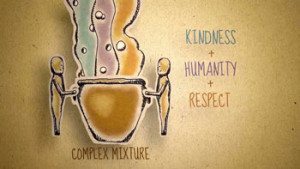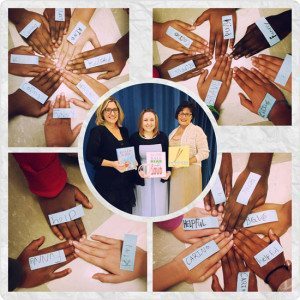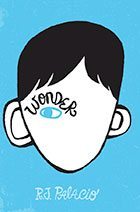“When given the choice between being right or being kind, choose kind.” ― R.J. Palacio, Wonder
Wouldn’t our classrooms be grand if students were given opportunities to learn about and experience what being kind looks like, sounds like and feels like on a daily basis? Wouldn’t life be grand if we could all simply choose true collaboration with our teaching colleagues to promote kindness? Wouldn’t our schools be grand if our districts would invest in kindness? My answer is a resounding “YES!” to these questions, and I hope other teachers would agree on all counts.
True, we are faced with constant pressure to prepare students for “those tests.” You know, the ones that are used to determine just how accomplished we teachers and our students are. Many of us still feel the urge to just close the door and do what we do in isolation. And yes, in many districts, significant funding is being used to buy new and comprehensive “core” reading programs (remember those test scores). Yet what about the content of our students’ character? What about their current level of engagement and future happiness? Could the answer be the pursuit of kindness and utilizing authentic literature in our classrooms? Do books really have the power to change lives? Again, my answer is a resounding “YES!”

Despite the challenges, my incredible colleagues and I have sought out an intentional approach to weave kindness into our teaching. As “humanities” teachers, it seems only fitting that along with lessons on parts of speech, comprehension strategies and writing literary essays, we include a commitment to teaching kindness. It is after all, an integral aspect of belonging to this thing we call humankind.
Smart teachers know there is a sense of urgency in our classrooms. Time is always in short supply while meetings, lesson planning, paper correcting, and grading are a constant demand. It helps to have a team like the one I work with. The strong levels of trust, mutual respect and shared enthusiasm for what we do is invigorating. We encourage each other to want to be the best teachers we can be. We continually brainstorm, test, succeed, fail, and try again, as we share our ideas, resources and instructional strategies with one another. This is a recipe for professional kindness that works. If you want to teach kindness in your classroom, it is much easier if you have camaraderie among your colleagues.

And kids seem to notice when their teachers love what they do. On November 13th, classrooms near and far participated in two simultaneous events: World Kindness Day and Global Read Aloud (aka Glow Ball Read Dahl Loud). My teammates and I wore our glow sticks and ball gowns, while reading poetry by Roald Dahl (loudly). We also shared the short film, Snack Attack, to promote a message of kindness and generate lots of discussion. Our unusual attire and this award-winning movie with a twist were excellent ways to reinforce the concept of “Contrasts and Contradictions” a signpost from Notice and Note; Strategies for Close Reading by Kylene Beers and Robert Probst.
It’s up to us teachers to work our magic to carve out the time, to create an integrated curriculum and culture of kindness. Kids who learn the importance of kindness are kids who develop empathy and compassion. They are more apt to be selfless in a world where “selfies” rule. Consider these “Words of the Wiser” (another Notice and Note signpost):
“I think probably kindness is my number one attribute in a human being. I’ll put it before any of the things like courage or bravery or generosity or anything else. Kindness — that simple word. To be kind — it covers everything, to my mind. If you’re kind that’s it.” ―Roald Dahl
The following kindness resources have been field-tested and have earned a solid stamp of approval from dozens of wise (and kind) 6 – 11 year olds.
Film
- Amy Krouse Rosenthal’s “Thought Bubble on Kindness” (Winner of Best Animation at the Peace On Earth Film Festival 2011)
- Snack Attack
Children’s Picture Books:
- Each Kindness by Jacqueline Woodson
- Have You Filled a Bucket Today by Carol McCloud
- Last Stop on Market Street by Matt de la Pena
- My Friend is Sad by Mo Willems
- Those Shoes by Maribeth Boelts
YA/Middle Grades Chapter Books:
- The Miraculous Journey of Edward Tulane by Kate DiCamillo
- The Misfits by James Howe
- Sahara Special by Esme Raji Codell
- The War That Saved My Life by Kimberly Brubaker Bradley
- Wonder by R.J. Palacio
In addition to reading books to and with kids to teach kindness, these professional books are well worth the investment of time and money:
- Beyond Nice: Nurturing Kindness with Young Children by Stuart L. Stotts
- Bullying Hurts, Teaching Kindness through Read Alouds and Guided Conversations
by Lester Laminack - Secret Kindness Agents: How Small Acts of Kindness Really Can Change the World
by Ferial Pearson
Finally, if you are looking for ways to bring a kindness campaign to your classroom, consider these special events.
- Random Acts of Kindness Day ― February 17, 2016
- International Pay It Forward Day ― April 28, 2016


Hear, hear, Maurna! Imagine a world where teaching kindness in the classroom was valued as highly as achieving high standardized test scores.
Wouldn’t that be something to celebrate, David! Thanks for your support, my friend!